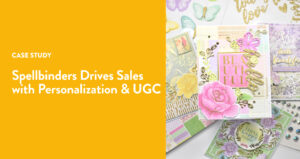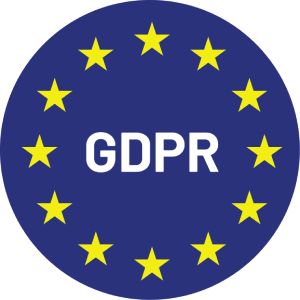In today’s digital age, data drives nearly every industry, and the beauty industry is, perhaps, the best example of how data retrieval can increase marketing ROI and other key indicators. Arguably, gathering data has become key for all beauty industry marketing efforts. As the popularity of beauty products shifts, waxes, and wanes, brand success depends on effectively understanding and leveraging consumer preferences.
Within this context, zero-party data (ZPD) has emerged as a crucial asset for beauty brands seeking to genuinely connect with and serve their customers and potential customers in the beauty industry. Understanding what is zero-party data, and how it can be leveraged, is crucial for beauty brands looking to increase the efficiency of their marketing and sales. In this article, we’ll explain zero-party data, its mechanisms of collection, and how Wyng and ZPD is transforming the beauty industry.
What is zero-party data?
Zero-party data is information willingly and proactively shared by consumers, providing brands with an unfiltered view of their preferences and intentions. Unlike first-party data, usually inferred by onsite behavior and purchasing habits, and third-party data, purchased or acquired from external sources, ZPD is the least presumptive form of consumer data.
Because ZPD is voluntarily provided by individuals who want to engage with a brand, it’s a valuable resource for understanding a customer’s or a potential customer’s preferences. This understanding allows beauty brands to tailor messages that resonate deeply with consumers for significant brand benefits.
Attract and convert visitors to customers
Earning and retaining customers is a top priority in the beauty industry. Zero-party data plays a pivotal role in achieving this goal by creating engaging and relevant experiences that drive conversions.
By leveraging ZPD, brands can gather valuable insights directly from customers, fostering loyalty and increasing purchases. This proactive data-sharing builds a foundation of trust, ensuring customers feel heard and valued.
Increase marketing efficiency
Efficiency in marketing is the cornerstone of success in the beauty industry. Wyng’s platform empowers brands almost effortlessly to create world-class, branded experiences.
The accuracy and immediacy of zero-party data enable instant personalization, providing actionable insights that can be automated for efficiency. Zero-party data marketing offers a streamlined approach that saves time and enhances customer engagement, resulting in increased marketing efficiency through highly tailored campaigns and product development.
Reduce your risk
Data privacy and security are paramount concerns for both brands and consumers. Zero-party data collection is driven by customer consent, which alleviates privacy concerns. This transparent and ethical approach ensures compliance with data protection regulations and fosters trust between brands and customers, leading to more meaningful and long-lasting relationships.
The beauty industry is ever-evolving, driven by trends and fads. Brand adaptability is key to staying competitive. Wyng’s services and enterprise-grade tools empower brands to move with the speed of the market.
This agility allows brands to respond quickly to changing trends and consumer preferences. By harnessing the flexibility of Wyng’s platform, brands can pivot, innovate, and seize new opportunities, ensuring they remain at the forefront of the beauty industry’s dynamic landscape.
Mechanisms of data collection
Zero-party data is collected through various mechanisms, all of which involve direct interactions with consumers. Here are a few options for such interactions.
Next Best Question
When a customer takes an action like clicking on an email link to visit your website, the Next Best Question experience allows you to ask a relevant question of your visitor and then offer a reward for the answer. For example, a beauty brand might ask about skin type and then make a helpful product suggestion along with a discount or incentive.
Quizzes & Surveys
Interactive product finder quizzes, like those employed by Bobbi Brown Cosmetics, engage customers by prompting them to answer questions regarding their specific beauty requirements and preferences. Surveys offer the opportunity to gather information on a wider range of customer preferences. The data gleaned from these quizzes and surveys guide product recommendations and personalization efforts.
Preference centers
Platforms like Wyng offer preference centers, empowering customers to articulate and update their evolving preferences over time. This data serves as a foundation for brands to customize their offerings in alignment with each customer’s unique tastes.
Post-purchase surveys
After a purchase, brands can solicit feedback through surveys, encompassing reviews, satisfaction levels, and future product interests. These insights aid in refining products and enhancing the overall customer experience.
A real-world example of exploding AOV
One zero-party data case study illustrates the significant increases in engagement and conversion rates. L’Oreal UK engaged Wyng in 2019 to increase opt-in email subscriptions and expanded to include new ways of engaging and educating customers in the form of diagnostic quizzes to help customers identify their preferences.
L’Oreal then crafted bespoke client experiences to encourage conversions. Despite being an industry giant, L’Oreal UK’s adoption of Wyng ZPD data collection resulted in an increased conversion rate of 21 percent and a whopping increase in average order value (AOV) of 134 percent.
The era of personalization in beauty
The beauty industry has experienced a remarkable evolution that includes a significant shift toward personalization. Consumers are no longer content with mass-produced, one-size-fits-all solutions.
Instead, consumers crave beauty products and experiences tailored to their unique and ever-changing preferences. This shift toward personalization has given rise to hyper-personalization, a concept ZPD plays a pivotal role in facilitating.
Understanding the evolution
Traditional beauty products and routines often followed a one-size-fits-all approach, disregarding individual consumers’ diverse and evolving needs. However, today’s beauty enthusiasts embrace their individuality and are no longer satisfied with generic solutions. This transformation has led to the emergence of bespoke beauty, an approach that customizes products and experiences to align with individual preferences.
The role of ZPD in hyper-personalization
Hyper-personalization in the beauty industry relies heavily on the valuable insights gathered from zero-party data. Unlike first-party data, generated through consumer interactions with a brand, or third-party data, often obtained from external sources, ZPD is voluntarily shared by consumers. This data offers an unfiltered and intimate view of their ever-evolving beauty preferences.
The dynamic nature of beauty preferences
It’s essential to recognize that beauty preferences are dynamic and subject to change over time. A person’s hair color may transition from blonde to red, and their skin type can shift from oily in the summer to dry in the winter. To adapt to these fluctuations, brands must consistently stay updated with their customers’ preferences.
A unique Wyng advantage
Wyng introduces a distinct feature that sets it apart in the beauty industry—the ability for brands to establish relevance and retention windows for specific data attributes. These attributes can encompass skin type, hair conditions, hair color, preferred length, and more.
Essentially, brands can define time frames during which a specific attribute remains relevant. When that window expires, Wyng prompts customers to retake a quiz or update their preferences through a Preference Center.
The freshness of data for personalization
This approach ensures brands always have access to fresh and accurate data for their personalization efforts. Having up-to-date information is invaluable in a dynamic world where beauty preferences can change rapidly. It empowers brands to tailor their recommendations, product offerings, and marketing campaigns precisely to match their customers’ individual needs and desires at any given moment.
Why hyper-personalization matters
Hyper-personalization isn’t merely a buzzword in the beauty industry. It allows brands to build deeper connections with their customers by demonstrating a profound understanding of their unique preferences.
Consumers are more likely to engage and make purchases when they receive recommendations that align perfectly with their current needs. This leads to increased customer satisfaction, loyalty, and business success.
Building authentic trust
Traditional methods of data collection are facing mounting challenges due to privacy concerns and consumer apprehensions about how their data is harnessed. Consumers are increasingly wary of sharing their personal information, especially in light of high-profile data breaches and privacy scandals.
However, zero-party data changes the narrative by placing transparency and consumer consent at its core. This newfound transparency in ZPD collection plays a pivotal role in fostering authentic trust between brands and consumers.
Unlike third-party data, often harvested without consumers’ knowledge or consent, ZPD is willingly and proactively provided by individuals. This means consumers are fully aware of the data they’re sharing and the purposes for which it will be used. Such transparency aligns with evolving data privacy regulations and reassures consumers their data is handled responsibly.
Offering real value in exchange for data
In the beauty industry, building trust through ZPD is a two-way street. Brands gain access to valuable insights into consumer preferences but offer real value in return: highly personalized product recommendations, product samples tailored to individual needs, exclusive coupons, and loyalty points.
These value exchange mechanisms enhance the customer experience and serve as tangible demonstrations of a brand’s commitment to meeting its customers’ unique needs and desires. In return for their ZPD, consumers receive tailored recommendations that align precisely with their preferences, ensuring they’re presented with products and offers that genuinely resonate with them.
Driving innovation with direct insights
Zero-party data has a distinct advantage in offering direct insights into consumer desires and unexplored market opportunities. By investigating data voluntarily shared by consumers, brands can uncover emerging trends and pinpoint unmet needs, providing inspiration for innovation in the beauty industry.
ZPD-driven insights act as catalysts for innovation both in marketing and product innovation, enabling brands to remain at the forefront of evolving consumer preferences. By embracing this data-driven approach, beauty brands can adapt their product offerings and experiences swiftly, ensuring they’re consistently aligned with the ever-changing desires of their target audience.
Efficiency in marketing and outreach
Efficiency plays a pivotal role in marketing, and zero-party data emerges as a key tool in enhancing the efficacy of marketing efforts, allowing brands to create more streamlined and result-oriented marketing campaigns that yield higher conversion rates.
The power of ZPD lies in the ability to build clearer marketing segments that allow campaigns to be tailored precisely to individual preferences, ensuring consumers receive messages and offers that deeply resonate with their unique tastes. When customers encounter marketing content that aligns with their interests, they’re more inclined to engage and make purchase decisions, boosting conversion rates significantly.
ZPD-driven marketing and outreach offer an elevated level of efficiency by ensuring marketing efforts are laser-focused on delivering tailored content to receptive audiences. The result is heightened engagement and conversion rates and a more economical allocation of resources, underpinning the notion that ZPD is a pivotal tool for brands seeking to maximize their marketing impact.
Enhancing the customer journey
The customer journey in the beauty industry encompasses various stages, from initial discovery to engagement to finally making a purchase. ZPD plays a pivotal role in curating this journey to ensure it aligns with individual preferences.
Zero-party data is key in this evolution because the data can be gathered at multiple points in the journey. Instead of having customers complete extensive surveys, brands can progressively capture data over time through various touchpoints. This approach ensures brands always have fresh and relevant insights into their customers’ evolving preferences and needs.
Build accurate customer profiles
Progressive data capture is a dynamic and ongoing process that allows brands to build comprehensive customer profiles gradually. This method involves collecting data in smaller, more manageable increments at various customer touchpoints. A customer might engage with a brand’s website multiple times, each interaction providing a piece of the puzzle, such as their preferred skin-care routine, hair type, or favorite fragrance.
Brands can use the insights gained from ZPD to map out the entire customer journey and automate steps along the way. From the moment a potential customer discovers a product to the point of making a purchase, ZPD-driven personalization ensures every interaction feels like a curated experience.
Shift with the tide
ZPD empowers brands in the beauty industry to create a customer journey that’s not only highly personalized but also fluid and adaptable. As customers evolve and their preferences shift, brands equipped with ZPD can pivot seamlessly to meet their changing needs, fostering loyalty and satisfaction along the way.
Navigating the regulatory landscape
As the beauty industry increasingly relies on data to drive innovation and personalization, its customers and potential customers will demand adherence to data regulations to ensure their privacy. Data privacy laws, such as the General Data Protection Regulation (GDPR) and the California Consumer Privacy Act (CCPA), impose strict requirements on customer data collection and use.
ZPD aligns naturally with these regulations because it’s rooted in transparency and consumer consent, a critical aspect of regulatory compliance. Brands that prioritize ZPD demonstrate their commitment to ethical data practices, gaining a competitive edge while mitigating legal risks.
Gaining a competitive advantage
Competition is fierce in the beauty industry, and gaining a competitive edge is absolutely necessary for success. ZPD-driven strategies have emerged as a means to stand out in a crowded market. Brands that leverage ZPD can offer hyper-personalized experiences that resonate deeply with consumers, setting them apart from generic competitors.
Looking ahead, ZPD is poised to shape the beauty industry’s future significantly. As technology continues to advance and consumer preferences evolve, ZPD will serve as the compass guiding beauty brands toward greater personalization, innovation, and customer-centricity.
Wyng and zero-party data have revolutionized the beauty industry with hyper-personalization and customer-centricity. From building trust and efficiency in marketing to driving innovation and compliance with data privacy laws, Wyng’s ZPD gathering offers an array of benefits. Contact Wyng today to learn how to leverage the power of ZPD to gain a competitive advantage, enhance the customer journey, and shape the industry’s future in the coming decade.






